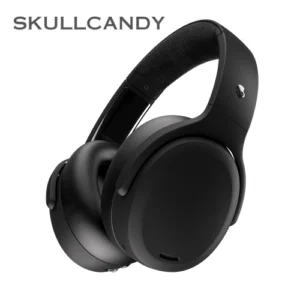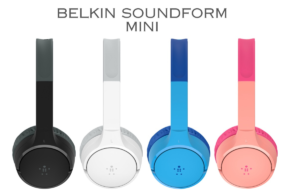Best Kids Headphones in 2024 Review- Mutaala.com
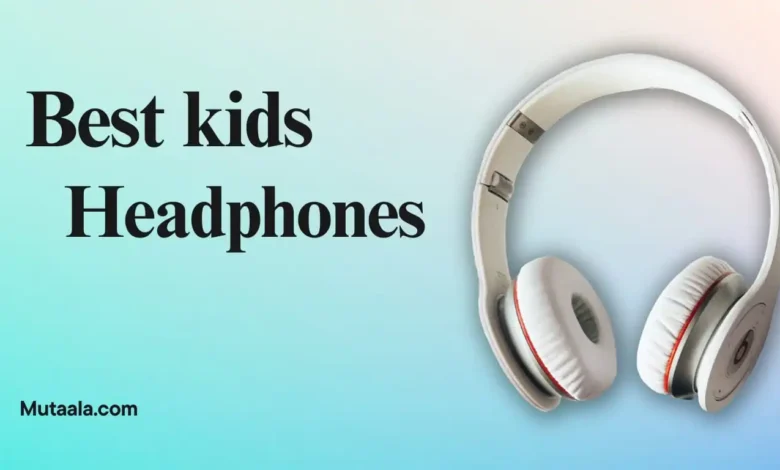
Best Kids Headphones in 2024 Review
Best Kids Headphones in 2024: Keeping your child entertained and their ears protected can be a challenge, especially when it comes to headphones. With so many options on the market, finding the best kids headphones can feel overwhelming. This guide will break down the key considerations, and top picks in various categories, and answer frequently asked questions to help you choose the perfect headphones for your child’s needs.
Selecting the Best Fit for Young Listeners
When shopping for the best kids headphones, there are several factors to prioritize over features found in adult models. Here are the key considerations:
- Age and Fit: Younger children (under 11) typically do better with smaller, on-ear headphones. Over-ear headphones, while offering better noise isolation, can be bulky for smaller heads. As your child gets older, they may prefer the comfort of over-ear designs.
- Durability: Kids can be tough on their belongings. Look for headphones made with sturdy materials and a reinforced headband to withstand drops and bumps.
- Comfort: Extended listening sessions are more enjoyable with comfortable headphones. Look for soft ear cups and padding on the headband.
- Volume Limiter: Many kid’s headphones incorporate a built-in volume limiter to protect your child’s hearing. This is a great safety feature, but remember you can also set volume limits on most devices.
- Wired vs. Wireless: Wireless headphones offer more freedom of movement, but wired headphones are a good option for airplane travel or if your child is prone to losing things.
Best kids headphones under budget:
-
Puro Sound Labs PuroQuiet-Plus:
These wireless headphones boast excellent sound quality, a comfortable design, and a built-in volume limiter. They’re a great all-around choice for older children.
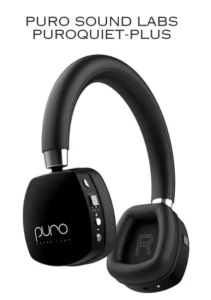
| Feature | Pros | Cons |
|---|---|---|
| Sound Quality | Excellent sound quality, good balance of bass, mids, and treble | May not be ideal for audiophiles (young listeners may not be too particular about this anyway) |
| Noise Cancelling | Effective noise cancellation for blocking out distractions | Noise cancellation technology can use more battery power |
| Comfort | Lightweight and comfortable design with plush ear cups | Some users with larger heads may find them a bit snug |
| Durability | Seems well-built with a reinforced headband | Time will tell how well they hold up to everyday use |
| Safety | Built-in volume limiter to protect children’s hearing | A bit more expensive than some other options |
| Battery Life | Up to 18 hours of battery life with noise cancelling turned on | May require more frequent charging for heavy users |
| Features | Integrated microphone for calls, wired and wireless listening options | Lacks some features found in higher-end adult headphones (e.g., app control) |
2. EarFun K2 Kids:
For a budget-friendly option, the EarFun K2 Kids offer decent sound, a comfortable fit, and a fun, colorful design.

| Feature | Pros | Cons |
|---|---|---|
| Price | Budget-friendly option, good value for the price | May not be the most durable option |
| Sound Quality | Decent sound quality, suitable for most kids’ listening needs | Bass may not be as powerful as some prefer |
| Comfort | Lightweight and comfortable design with soft ear cups | Ear cups may not be as plush as higher-end headphones |
| Durability | Seemingly sturdy enough for everyday use, but may not withstand roughhousing | Consider getting a carrying case for extra protection |
| Safety | Limited volume output helps protect hearing, although it doesn’t have a dedicated volume limiter | You can still set volume limits on most devices |
| Battery Life | Up to 25 hours of playtime on a single charge | May require charging more frequently for extended use |
| Features | Built-in microphone for calls, wired and wireless listening options | Lacks some features of pricier headphones (e.g., noise cancellation) |
3. JBL JR 460NC:
While noise-canceling technology isn’t as common in best kids headphones, the JBL JR 460NC offers a good balance of features and functionality for older children who need some outside noise blocked out.
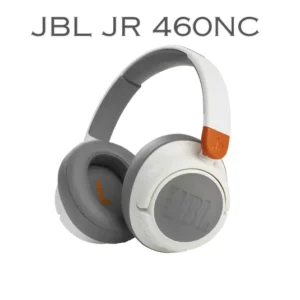
| Feature | Pros | Cons |
|---|---|---|
| Price | More expensive than some kids headphones | May not be the most budget-friendly option |
| Sound Quality | Good sound quality, decent bass response | May not be as high-fidelity as some adult headphones |
| Noise Cancelling | Yes, effective noise cancellation for blocking out distractions | Noise cancellation technology can use more battery power |
| Comfort | Comfortable, on-ear design with soft ear cups | Ear cups may not be suitable for all head shapes or sizes |
| Durability | Seemingly sturdy enough for everyday use | Consider getting a carrying case for extra protection |
| Safety | Built-in volume limiter to protect children’s hearing | May not be suitable for very young children who might remove them easily |
| Battery Life | Up to 20 hours of battery life with noise cancelling turned on | May require charging more frequently for heavy users |
| Microphone | No microphone | Not ideal for online calls or video conferencing |
| Wired/Wireless | Wireless | Limited mobility due to lack of wired option |
| Features | Noise cancellation, fun, colorful design | Lacks features like a microphone and multipoint Bluetooth pairing |
| Best for | Older children who need noise cancellation for travel or focus | Not ideal for younger children or those who need a microphone for calls |
4. Skullcandy GripChat 500:
These wired headphones feature a built-in microphone for clear online calls during virtual learning sessions. The durable design can handle being tossed in a backpack.
| Feature | Pros | Cons |
|---|---|---|
| Price | Affordable option, good value for wired headphones | May not be as feature-rich as some wireless models |
| Durability | Built to withstand everyday use | Bulkier design compared to some on-ear options |
| Comfort | Relatively comfortable design with padded headband | May not be ideal for extended listening sessions due to bulkier design |
| Safety | No built-in volume limiter, but wired connection avoids Bluetooth radiation concerns | Requires parental supervision to ensure safe listening volume |
| Microphone | Integrated microphone for clear communication during online calls | Microphone quality may not be as good as some dedicated headsets |
| Wired Connection | No need to worry about batteries dying, perfect for airplane travel | Limited mobility due to wired connection |
| Features | Durable design, good for school use | Lacks features like noise cancellation and wireless connectivity |
5. JVC Flats:
These lightweight, wired headphones are a great choice for airplane travel. They offer good sound quality at a very affordable price point.

| Feature | Pros | Cons |
|---|---|---|
| Price | Very affordable, budget-friendly option | May not be the most durable |
| Sound Quality | Good sound quality for the price, decent for casual listening | May lack bass for those who prefer a richer sound |
| Comfort | Lightweight and comfortable on-ear design | May not be suitable for long listening sessions due to less padding |
| Durability | Lightweight construction may be susceptible to breakage | Consider getting a carrying case for extra protection |
| Safety | No built-in volume limiter, requires parental supervision | You can still set volume limits on most devices |
| Wired Connection | No need to worry about batteries dying, perfect for airplane travel | Limited mobility due to wired connection |
| Features | Simple and lightweight design | Lacks features like noise cancellation and microphone |
6. Belkin SoundForm Mini:
With a long battery life and comfortable fit, the Belkin SoundForm Mini is a good option for keeping your child entertained on long trips.
| Feature | Pros | Cons |
|---|---|---|
| Price | Affordable option, good value for the price | Lacks some features found in higher-end models |
| Sound Quality | Good sound quality, decent balance of bass, mids, and treble | May not be ideal for audiophiles (young listeners may not be too particular about this anyway) |
| Comfort | Lightweight and comfortable on-ear design with plush ear cups | Ear cups may not be as breathable as some, potentially causing warm ears during extended use |
| Durability | Seemingly sturdy enough for everyday use | Micro-USB charging instead of the more common USB-C |
| Safety | No built-in volume limiter, but volume limited to 85db to protect hearing | You can set additional volume limits on most devices for extra protection |
| Battery Life | Up to 30 hours of battery life on a single charge | May require charging more frequently for heavy users |
| Features | Multipoint Bluetooth pairing allows connection to two devices simultaneously | Lacks features like noise cancellation and a microphone |
| Charging | Micro-USB charging | Micro-USB is less convenient and slower than USB-C |
Wired vs. Wireless: Weighing the Pros and Cons
| Feature | Wired Headphones | Wireless Headphones |
|---|---|---|
| Pros | Less expensive, no batteries required, perfect for airplane travel | More convenient, no cords to tangle |
| Cons | Can be tethered to a device, limiting movement | Batteries need to be charged, can be easier to lose |
- Younger children: Wired headphones are less likely to get lost or broken.
- Airplane travel: Wired headphones ensure compatibility with airplane entertainment systems.
- Budget: Wired headphones are typically more affordable.
When to Choose Wireless:
- Older children: Offer more freedom of movement.
- Convenience: No cords to worry about.
Finding the Perfect Fit in the Market
The good news is that many of the top-rated kid’s headphones we’ve mentioned are readily available in the following market.
- Amazon
- Best Buy
- Target
- Walmart
No matter which retailer you choose, be sure to read reviews and compare prices before making your final decision.
Comparison of best kids headphones: Pros and Cons
| Feature | Puro Sound Labs PuroQuiet-Plus | EarFun K2 Kids | Skullcandy GripChat 500 | JVC Flats | Belkin SoundForm Mini |
|---|---|---|---|---|---|
| Price | More expensive | Budget-friendly | Affordable | Very affordable | Affordable |
| Sound Quality | Excellent | Decent | Good for the price | Good for the price | Good |
| Noise Cancelling | Yes | No | No | No | No |
| Comfort | Comfortable, lightweight | Comfortable, lightweight | Relatively comfortable | Lightweight | Comfortable, on-ear |
| Durability | Seems well-built | Seemingly sturdy | Built to withstand use | May not be the most durable | Seemingly sturdy |
| Safety | Built-in volume limiter | Limited volume output | No built-in volume limiter | No built-in volume limiter | Volume limited to 85db |
| Battery Life | Up to 18 hours | Up to 25 hours | N/A (wired) | N/A (wired) | Up to 30 hours |
| Microphone | Yes | Yes | Yes | No | No |
| Wired/Wireless | Wired/Wireless | Wired/Wireless | Wired | Wired | Wireless |
| Features | Noise cancellation, microphone | Microphone | Microphone | Lightweight design | Multipoint Bluetooth |
| Best for | Older children, travel | Budget-conscious buyers | School use, calls | Airplane travel | Travel, long listening sessions |
In Conclusion
Choosing the best kids headphones doesn’t have to be complicated. By considering your child’s age, needs, and listening habits, you can find a pair that is both safe and enjoyable. Remember, comfort, durability, and volume control are key factors to prioritize. With a little research, you’re sure to find the perfect headphones to keep your child entertained while protecting their hearing.
Frequently Asked Questions (FAQ)
Q: Are noise-cancelling headphones safe for kids?
A: In general, noise-cancelling headphones are safe for kids in moderation. However, there are a few things to keep in mind:
- Hearing Development: Young children’s ears are still developing. Frequent use of noise-cancelling headphones could hinder their ability to distinguish certain sounds. It’s best to use them for specific situations, like airplane travel, rather than everyday use.
- Volume Control: Even with noise-canceling technology, it’s important to monitor your child’s volume levels.
Q: How long can kids safely wear headphones?
A: The American Academy of Audiology (AAA) recommends limiting headphone use to a maximum of two hours per day at moderate volume levels (around 85 decibels).
Q: What are some signs of hearing damage in children?
A: Difficulty hearing conversations, especially in noisy environments.
- Asking others to repeat themselves often.
- Complaining of ear pain or ringing in the ears.
If you notice any of these signs in your child, it’s important to consult with a doctor or audiologist.
Q: Do kid’s headphones need a microphone?
A: Not necessarily. A microphone is a useful feature for online learning or video calls, but not essential for all listening activities. Consider your child’s specific needs when making this decision.
Q: How much should I spend on kids’ headphones?
A: Best kids headphones can range in price from around $20 to over $100. There are good quality options available at all price points. Consider your child’s age, how often they will use the headphones and the features that are important to you when determining your budget.


